Engine of the week is presented by



By the time we arrived at Gainesville Raceway for the fourth day of Sick Week, we had already talked to several competitors about their awesome drag and drive cars and engine setups. However, there was still much more to discover from the more than 300 competitors, and the cars just kept getting better and better. Case in point, Jason Sack’s orange and white 1969 Nova called Cowboy Up, which features a 429-cubic-inch LSX engine. Jason was checking tabs and doing routine maintenance when we stopped by his pit area, but he put down the tools for a minute to tell us all about the ins and outs of his mighty LSX.
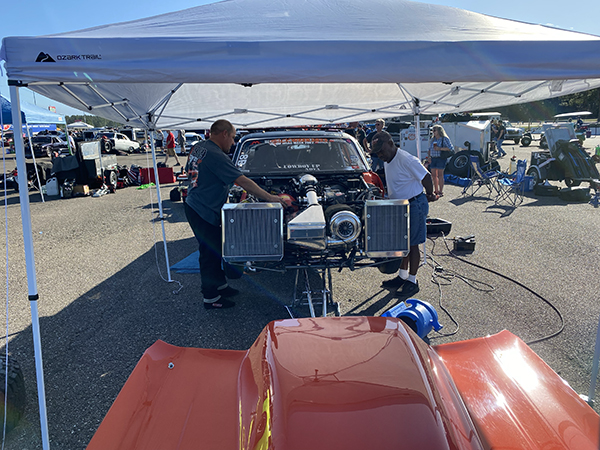
Of course, the great thing about drag and drive events is that you find a mix of racing veterans and newbies. Jason fell into the veteran category, but that doesn’t make the task at hand – finishing the event – any easier. He was in Sick Week competing in the tough Unlimited Iron class against the likes of Steve Morris, Alex Taylor, Tina Pierce and Bryant Goldstone among others.
“We got here and tested in Bradenton a couple of days before the event started,” says Jason Sack. “However, I was in the fight bus. The car ran to my house, but when we brought it here it took us six hours with three to fire it up. All we did was change the fuel. So I went through four days of testing and never got over 400 feet. Then the first day in Orlando I think we went 7.54 at 177 mph or something. Then the next day I run a personal best of 202 mph. At South Georgia Motorsports Park I ran a personal best ET of 7.08. That was a good lick, and it was only on seven cylinders.”
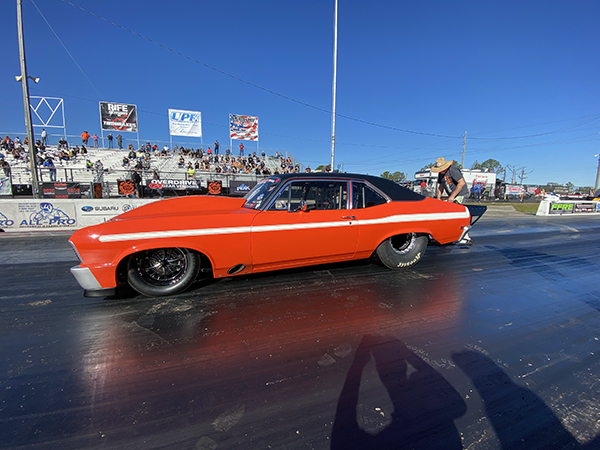
If all had gone smoothly, Jason expects Nova to be able to see ET as low as 6.80 seconds. That’s a far cry from where his Nova initially started.
“The car started out as a small tire 275 with a stock floor and frame, a bolt-on front end, and then it went to the chassis shop and just went in a double-frame rail,” says Sack. “Skinny Kid Race Cars built the chassis. The engine has a Dart block, All Pro LS7 heads, Jesel rocker arms, a solid roller camshaft, a BS Racing 106mm turbo, and a Turbosmart dump port. We also run an iced intercooler and Dailey six-stage dry sump oil system.
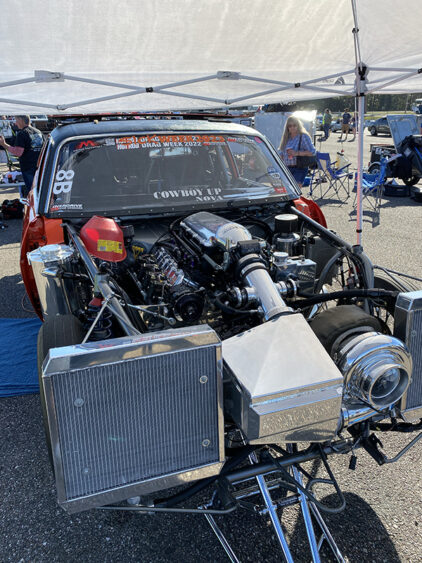
“We just switched to dry sump for this event. We had some cavitation from the oil pump, so we switched to dry sump and that solved those problems. We start in the morning at 93 psi. I do my exhaust at 93 psi and I hit mine at 93 psi all the way in. It’s just solid as a rock.
“The engine also has a Callies Magnum crank and R&R aluminum rods, which we just switched to for this event. I leaned on it hard and bent some rods from the water getting into the cylinders. I put 50 psi on the radiators and I blew them all out so they are all new.I also have custom made Diamond pistons, a Holley intake and Holley Dominator EFI.
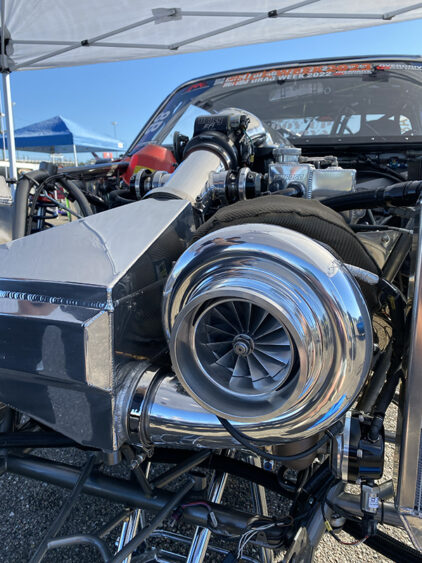
Jason’s LSX normally runs C16 race fuel, but for Sick Week he switched to VP X98, which he says has been great. He also added a 10 gpm brushless pump and Injector Clinic 2600 injectors to keep up with the ethanol.
“We also have a Rossler 400 transmission and a ‘Skinny Kid 9’ rear end with 4.10 gears,” he notes.
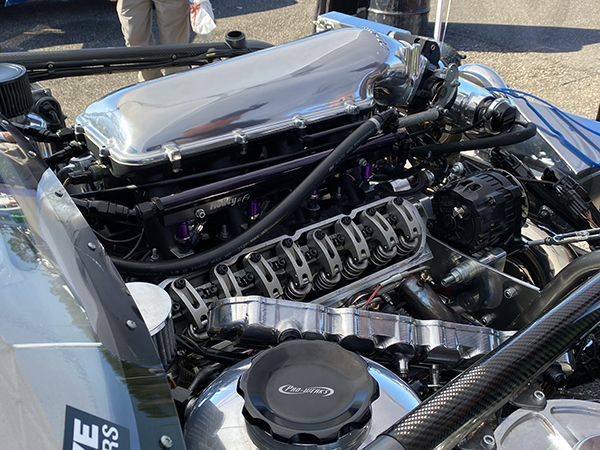
In addition to the 106mm turbo, Jason’s Nova gets a boost from a 150hp nitrous shot that sprays on just the two-step.
“We close it at 8 pounds,” he says. “This motor takes about 7 seconds to wind it up and when I use the nitrous it takes it down to 2.5 seconds, so it’s simple. With a bit of tuning, we can probably fix it where we don’t need it, but once I did it once and it just gets on the chip, I was almost sold. I’ll carry the weight.”
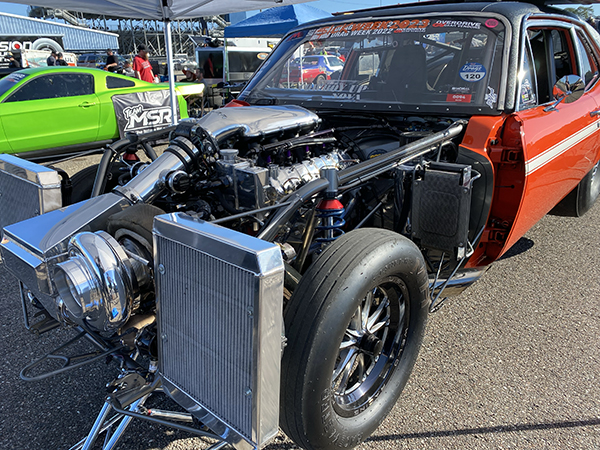
The BS Racing turbo is usually no more than 32 lbs. of momentum, and Jason told us he was using 31.6 pounds for most of the sick week.
“We’re running at about 18 lb. at 5,500 rpm and there’s no boost ramp,” says Sack. “It’s all he’ll do to get to 31 pounds. as fast as he goes, which is usually less than half a second.”
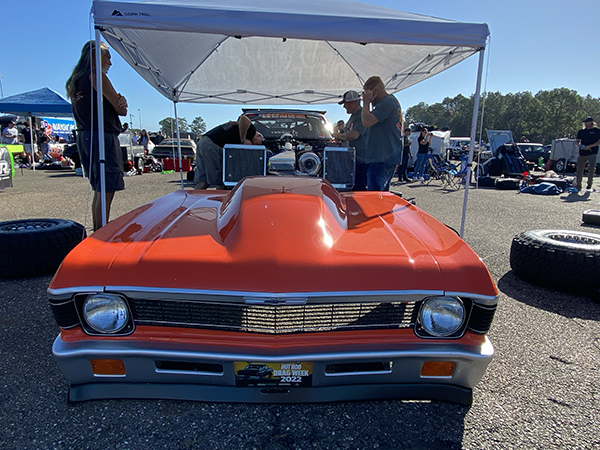
With the turbo and nitrous, Jason’s LSX engine makes a safe 2,200 horsepower! It can make more power than that, though, but Jason has seen issues crop up at 2,400 horsepower, so he likes to stay below that mark.
Track performance is one thing, but track-to-track drives can be another, and Jason says the Nova does pretty well on the street, but it can get pretty hot in the car without AC.

“It works absolutely flawlessly on drives,” he says. “I changed the shocks and put a heavier spring. It’s hot in the car though, I mean so hot it thermally shuts down your phone and iPad when you’re driving. You have to hold it out the window to cool it down -lo. It’s probably like 150-160 degrees F in the car while you’re driving. You feel cooked.”
Outside of a personal best of 202 mph on one pass and a personal best of 7.08 ET on another, Jason’s sick week ultimately didn’t go according to plan. Unfortunately, Gainesville was the end of the road for Jason during this year’s Sickness Week, so we were glad we had the chance to talk with him. Finally, he turned in ETs of 7.42 at 202 mph, 7.56 at 177 mph, and 7.08 at 196 mph. Hopefully we’ll see him again next year!
Engine of the week is sponsored by PennGrade Motor Oil, Elring – Das Original i NPW companies. If you have an engine you’d like featured in this series, email Engine Builder Editor Greg Jones at [email protected].


